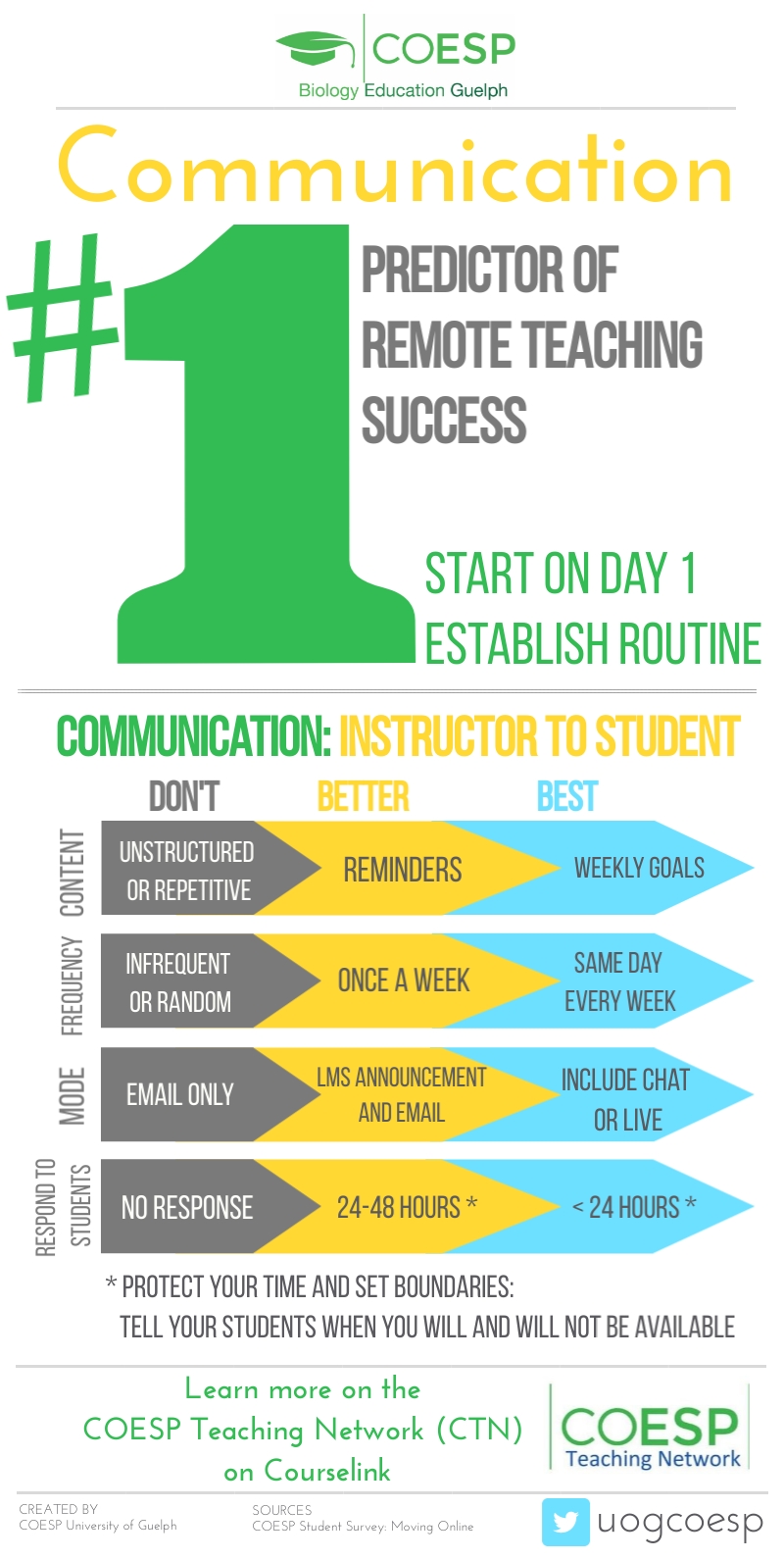5 Infographic: Communication

We heard from our students that Communication made all the difference in Remote Teaching and Learning! Providing students with weekly goals and expectations can provide motivation, and your students are more likely to be engaged in the course.
Communication is particularly important at the beginning of the term as you provide a clear outline for the structure of the course, including how lessons will be taught, the frequency and format of assessments, when assignments will be due, how any group work will be conducted, and other topics that may be specific to your course. Start communicating early and establish a consistent routine for the term!
While the above discussion centers on communication from Instructor to Student, communication from Student to Instructor is also important to consider as students lack opportunities to communicate informally before or after class that would be afforded in a face-to-face class. Reply to your students in a timely manner, and let them know when you will, and will not, be available.
Now you have an idea of What to communicate, now How will you communicate with your students? A good option is Announcements in Courselink such that students both receive an email, but also have a collection of all announcements for your class available anytime on Courselink. Brief videos can also be helpful in terms of both efficiency and connection.
When considering the Pathway to Remote Teaching, many components are intertwined. Providing effective Communication for your students provides Routine and Connection within the Remote Teaching Pathway.

